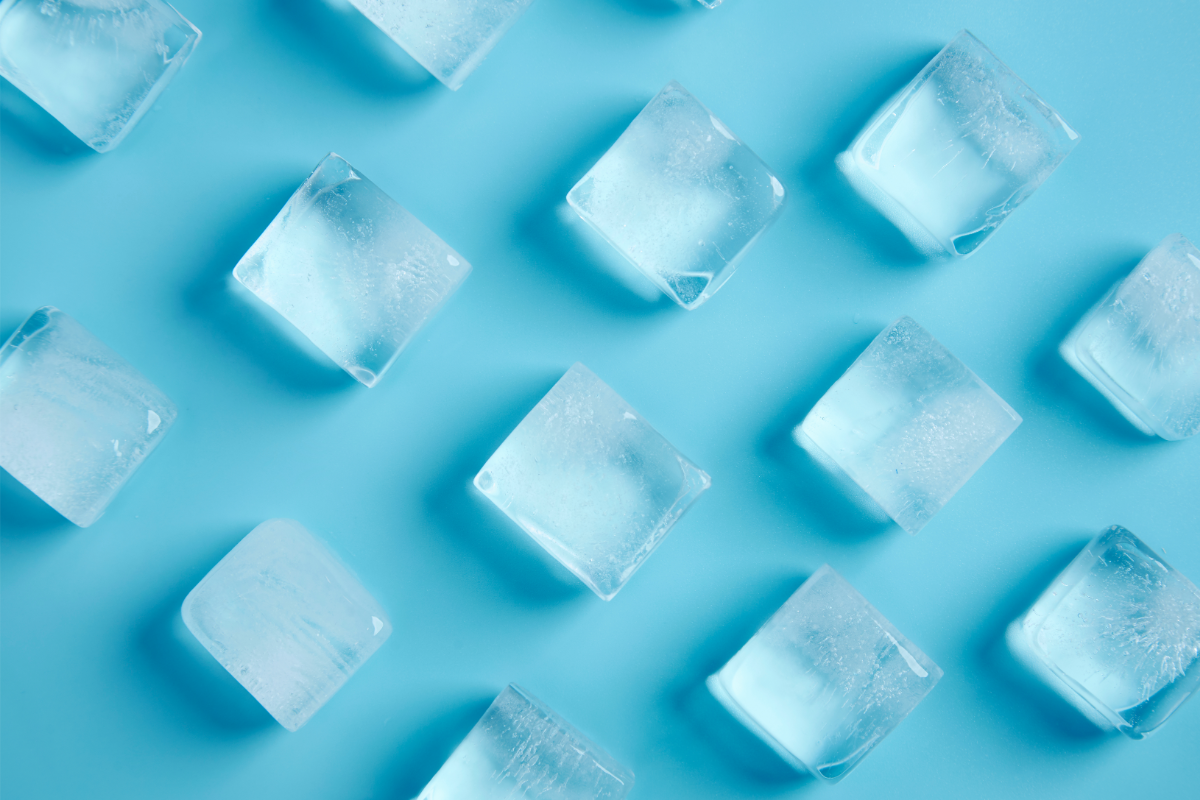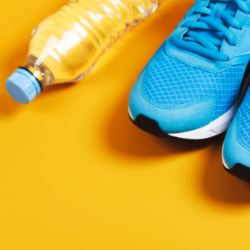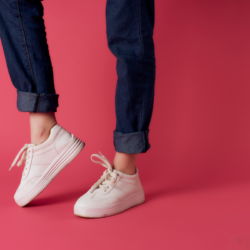Ice bathing, often referred to as ‘cold plunge‘, is not just a modern trend in the world of wellbeing and sport. This practice, rooted in centuries of tradition and therapeutic rituals across different cultures, continues to fascinate and offer surprising health benefits. From reducing muscle inflammation to improving mental health, the ice bath is attracting growing interest for its physiological and psychological effects. In this article, we delve into the world of ice bathing to explore the science behind this age-old practice. Join us to discover how this method of recovery can transform your health and well-being.
History and origins of the ice bath
The ice bath, while popular in modern wellness and sports recovery practices, has roots deep in history. The tradition transcends geographical and cultural boundaries, having been adopted by various civilisations over the centuries.
- Ancient origins: The first known uses of ice baths date back to Antiquity. In ancient Rome, for example, cold baths were a common feature of public baths, used to revitalise the body after hot baths. Similarly, in Scandinavia and Russia, the practice of jumping into icy lakes or ice holes after a sauna was and still is a common tradition, in the belief that it has purifying and invigorating properties.
- Oriental practices: In Asia, particularly Japan, ‘misogi’, a Shinto ritual of purification, often involves immersion in cold water. This practice is believed to purify the mind and body by eliminating impurities.
- Developments in modern times In modern times, the ice bath has been rediscovered, particularly in the world of sport. Athletes and fitness professionals began to adopt ice baths for muscle recovery after intense training. Scientific studies have begun to explore its benefits, reinforcing its integration into health and wellness routines.
- Growing popularity: With the rise of health and wellness research, as well as the influence of the media and public figures, the ice bath has gained increasing popularity. Today, it is practised not only by athletes but also by people looking to improve their overall health, manage stress or simply experiment with alternative methods of well-being.
This wealth of history and culture gives ice baths a dimension that goes beyond simple modern practice, rooting them in a heritage of health and well-being that has spanned the ages.
What are the benefits of an ice bath?
The concept behind the ice bath is fairly simple but effective. It involves immersing the body, or certain parts of the body, in water at a very low temperature for a limited time, generally less than 20 minutes. This exposure to cold water creates a series of physiological reactions that can have various benefits for health and physical recovery.
Reduced inflammation
Muscle inflammation post-exercise is a normal physiological response to intense physical activity, but it can also be a source of pain and a barrier to rapid recovery. Various clinical studies indicate that immersion in an ice bath can lead to a significant reduction in inflammatory markers. This reduction appears to be due to cold-induced vasoconstriction, which limits blood flow to the affected areas, thereby reducing the influx of inflammatory cells and pro-inflammatory cytokines. The result is a reduction in the oedema and pain associated with muscle inflammation.
It should be noted that reducing inflammation can also have negative effects, notably by limiting muscle adaptation to exercise. Consequently, the use of ice baths should be carefully calibrated according to the specific objectives of each individual and possibly alternated with other recovery methods.
Accelerating recovery
In addition to reducing inflammation exposure to cold can also accelerate the healing process of muscle damage. The theory behind this effect is based on the concept of ‘metabolic waste’: after intense exercise, muscles produce metabolic waste that can delay recovery. Exposure to cold can encourage the elimination of this waste by improving blood circulation following the initial vasoconstriction and subsequent vasodilation, a phenomenon often referred to as the ‘pump effect’.
Studies have shown that athletes who use ice baths as a recovery method have lower levels of blood lactate, a metabolic waste product, than those who do not. This is indicative of a more efficient elimination of metabolic waste, which can speed up the healing process and improve subsequent physical performance.
It should be stressed, however, that the field of muscle recovery is complex and ice baths are not a one-size-fits-all solution. Other recovery methods, such as active warm-up, stretching or massage, can also be beneficial and their relative effectiveness may vary according to individual circumstances.
What are the effects of exposure to cold on blood circulation?
One of the most immediate physiological reactions to exposure to cold water is vasoconstriction, a narrowing of blood vessels that limits blood flow to peripheral tissues. This mechanism can have several advantages in the context of muscle recovery. In particular, vasoconstriction can reduce inflammation by limiting the influx of inflammatory cells to damaged areas. Clinical studies have shown that this phenomenon can help to minimise swelling and pain in the days following intense exercise.
Vasodilation
Surprisingly, repeated and controlled exposure to cold can also have positive effects on long-term vasodilation. The theory is that exposure to cold can initiate an adaptation process that makes blood vessels more efficient at dilating under certain conditions. This improved vasodilation can improve blood circulation and potentially increase the supply of nutrients and oxygen to tissues, which is beneficial for general health and muscle recovery.
Benefits of ice baths for muscle recovery
The ice bath is particularly renowned for its beneficial effects on muscle recovery. Here is a list of the main benefits:
- Reduced Muscle Inflammation:
- Cold helps reduce inflammation and swelling in sore muscles after exercise, speeding up recovery.
- Reduced Muscle Soreness:
- Immersion in ice-cold water can reduce muscle soreness, particularly after intensive training.
- Reduced muscle fatigue:
- The ice bath helps to reduce muscle fatigue, enabling faster recovery and better performance in subsequent training sessions.
- Improved blood circulation:
- After the initial shock of cold, blood vessels dilate, improving circulation. This facilitates the elimination of metabolic waste products such as muscle lactate.
- Acceleration of the healing process:
- By reducing inflammation and improving circulation, the ice bath can speed up the healing process of muscle microtrauma.
- Injury prevention:
- Regular use of ice baths can help prevent injuries by keeping muscles in an optimal state of recovery.
Does cold improve mental health?
Several studies have shown that ice baths can have beneficial effects on mental health, particularly in terms of stress reduction. The physiological response to cold appears to calm the sympathetic nervous system, reducing levels of the stress hormone cortisol. This regulation of the nervous system can contribute to a feeling of well-being and a reduction in anxiety and stress.
Increase in endorphins
Exposure to cold in an ice bath also stimulates the production of endorphins, frequently referred to as the ‘happy hormones’. Endorphins are known for their effects analgesic effects and their ability to induce feelings of well-being, which can be an effective complement to the physiological benefits of this practice.
What impact does an ice bath have on the immune system?
Preliminary research suggests that regular exposure to cold, such as that experienced during ice baths, may strengthen the immune system. One theory is that exposure to cold may increase the production of white blood cells, which are responsible for fighting infection. However, these data still need to be confirmed by more in-depth studies to validate the long-term effectiveness of ice baths in boosting immune function.
Alternatives to the full ice bath
Although the full ice bath offers significant benefits, there are more accessible alternatives that can provide similar benefits. Among these alternatives, cold showers and local cold applications stand out for their practicality and effectiveness.
1. Cold showers: a practical alternative
- Practicality: Cold showers are a practical alternative to ice baths, especially for those who don’t have the space or means for a suitable bath.
- Similar benefits: Although less intense than a full ice bath, a cold shower can also help muscle recovery, reduce inflammation and improve blood circulation.
- Flexibility of use: A cold shower can be taken quickly after training, making it ideal for immediate recovery.
- Immune system stimulation: Like ice baths, cold showers can also stimulate the immune system.
2. Local cold applications: Specific targeting
- Targeted Application: Local applications of cold, such as ice packs or cold wraps, can be used to target specific areas of the body, such as sore muscles or joints.
- Exposure Control: This method allows the duration and intensity of exposure to cold to be more precisely controlled.
- Inflammation and pain reduction: Local application of cold can be very effective in reducing inflammation and relieving pain in specific areas.
- Practical for injuries: For sports injuries or localised pain, this method offers a practical and immediate solution.
3. Practical advice
- Duration and frequency: Whether for cold showers or local applications, it’s important not to exceed 15-20 minutes per session.
- Caution and gradualness: Start gradually, especially if you’re new to cold therapy.
- Medical consultation: As with ice baths, consult a doctor before starting, especially if you have any pre-existing medical conditions.
By incorporating these alternatives into your recovery routine, you can enjoy the benefits of cold while adapting the approach to your needs and lifestyle. These methods offer greater flexibility and accessibility, while providing benefits similar to those of full ice baths.
What is the relationship between exposure to cold and longevity?
Interest in the effects of cold exposure on longevity has led to numerous studies and research over the last few decades. Although the exact mechanisms remain partly unexplained, researchers have established certain plausible links.
Activation of longevity pathways
Some studies suggest that exposure to cold may activate metabolic pathways associated with longevity, in particular by modulating sirtuins, proteins that play a role in cell regulation and energy metabolism.
What effects does an ice bath have on lipid metabolism?
Exposure to cold increases thermogenesis, thereby stimulating lipid metabolism. This could potentially contribute to a reduction in adipose tissue and the risk of metabolic diseases, factors associated with reduced life expectancy.
Modulation of oxidative stress
Oxidative stress, an imbalance between the production of free radicals and the body’s ability to neutralise them, is often linked to ageing. Exposure to cold can stimulate antioxidant defences, contributing to better management of oxidative stress.
Reducing chronic inflammation
Inflammation plays a key role in many diseases associated with ageing. Studies have shown that exposure to cold can reduce markers of inflammation, which could have a positive impact on longevity.
Safety considerations and contraindications for ice baths
Although ice baths have many benefits for health and muscle recovery, they are not suitable for everyone. Here are some safety considerations and contraindications to bear in mind:
- Cardiovascular problems:
- People with heart disease or high blood pressure should avoid ice baths or consult a doctor before trying them. Sudden exposure to the cold can increase blood pressure and stress the heart.
- Circulatory disorders:
- Individuals with circulation disorders, such as Raynaud’s disease, should also be cautious, as the cold can exacerbate these conditions.
- Pregnancy:
- Pregnant women should avoid ice baths, as the extreme temperatures could pose risks to the foetus.
- Cold sensitivity and skin diseases:
- People with increased sensitivity to cold or certain skin conditions should refrain from using ice baths or consult a health professional.
- Children and the Elderly:
- We recommend particular caution for children and the elderly, as they may be more sensitive to the effects of cold.
- General precautions:
- It is advisable not to stay in icy water for more than 15-20 minutes.
- It is important to warm up gradually after an ice bath to avoid thermal shock.
- Avoid ice baths if you feel ill or have open wounds.
It is crucial to observe these safety considerations to avoid potentially serious complications. If in doubt, it is always advisable to consult a healthcare professional before incorporating ice baths into your routine.
FAQ : Ice baths
Q1 : How long should I stay in an ice bath to get the maximum benefits? A: The optimum duration of an ice bath is between 10 and 15 minutes. Longer periods are not recommended as they can present risks such as hypothermia.
Q2: How often can I take an ice bath for effective muscle recovery? A: For muscle recovery, we recommend taking an ice bath 2 or 3 times a week. This prevents excessive stress on the body.
Q3: Is ice bathing safe for everyone? R : Although ice baths are beneficial for many people, they are not suitable for everyone. People with heart problems or certain other medical conditions should consult a doctor before trying it.
Q4: Can ice baths really boost the immune system? A: Preliminary studies suggest that ice baths can boost the immune system by stimulating the production of white blood cells. However, further research is needed to confirm these effects.
Q5: How do ice baths affect mental health? A: Ice baths can help reduce stress and increase the production of endorphins, which can improve mood and reduce anxiety.
Q6 : Can an ice bath be replaced by a cold shower? R : Yes, a cold shower can be a practical alternative to an ice bath, offering similar benefits such as reducing inflammation and improving blood circulation.
Q7 : Are ice baths effective for all types of exercise? R : Ice baths are particularly beneficial after intense or long-lasting exercise. However, they may not be necessary after lighter physical activities.
Q8 : Are there any contraindications to using ice baths? A: Contraindications include certain medical conditions such as circulatory disorders, heart disease and pregnancy. It is important to consult a healthcare professional before starting.
Source:
- “Ice baths can decrease gains in strength and muscle growth. They can impede muscle fibre growth, suppress inflammation and slow muscle growth.” Source: Ohio State University Health and Wellness.
- “Post-exercise ice water immersion: is it a form of active recovery?” Source: PubMed.
- “The effects of cold water immersion and active recovery on inflammation in skeletal muscle after intense resistance exercise.” Source : PubMed.
- “Ice baths are effective in reducing symptoms of exercise-induced delayed muscle soreness.” Source: ScienceAlert.
- “Cold water immersion is no more effective than active recovery for inflammatory and stress responses in muscle after resistance exercise.” Source : PubMed.
- “Cold water immersion and active recovery are common recovery treatments after exercise. A key hypothesis is that it reduces inflammation in skeletal muscle.” Source: PubMed.
- “Health effects of voluntary exposure to cold water – a topic of ongoing research.” Source: PubMed.
- “Effects of cold water immersion and active recovery on molecular aspects of muscle hypertrophy.” Source : PubMed.
- “Cold water immersion for the prevention and treatment of post-exercise muscle soreness.” Source: PubMed.
- https://www.ncbi.nlm.nih.gov/pmc/articles/PMC9518606/
- https://www.ncbi.nlm.nih.gov/pmc/articles/PMC8470111/
- https://www.ncbi.nlm.nih.gov/pmc/articles/PMC5285720/







